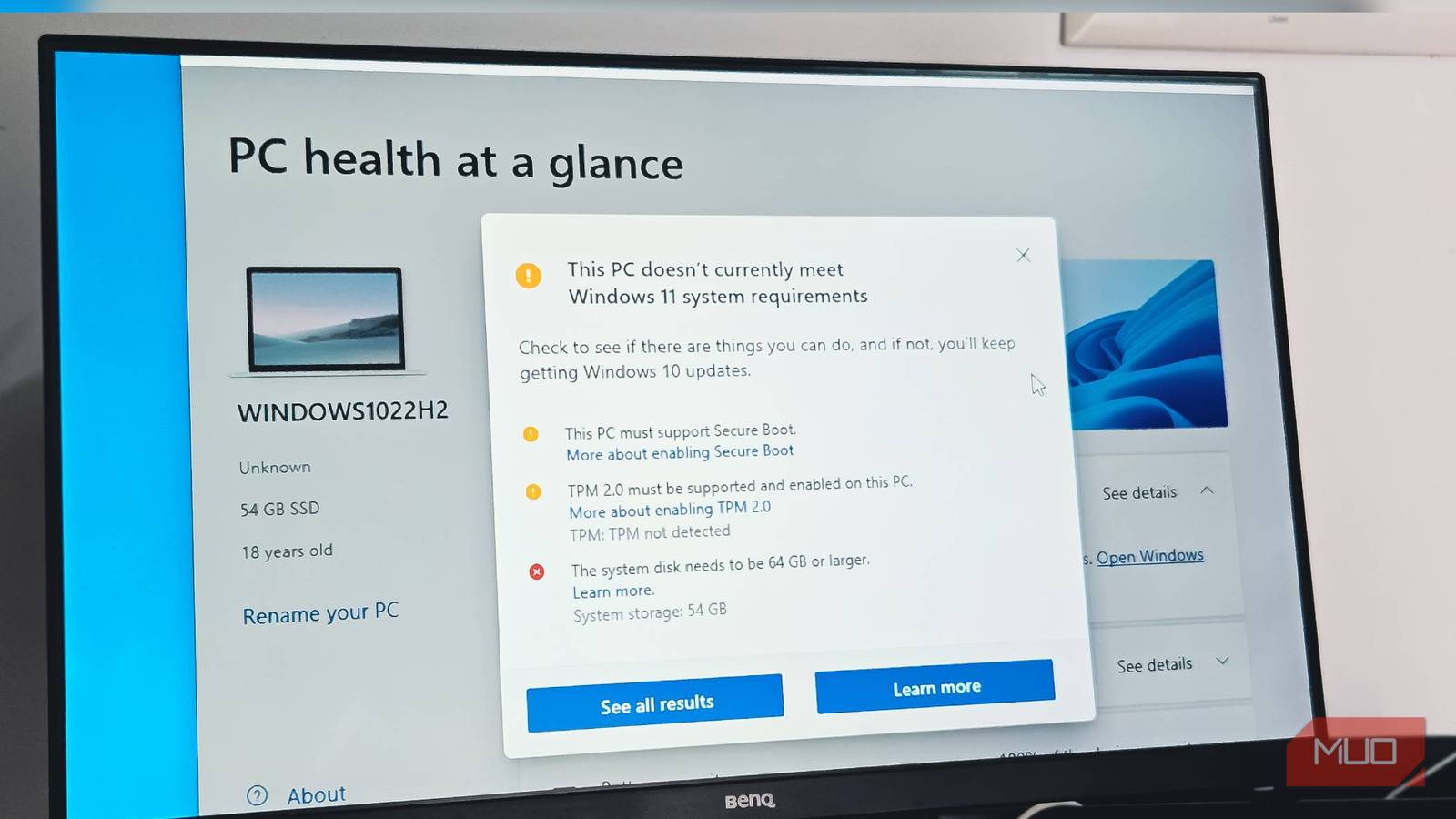Apple and T-Mobile aren’t the only players bringing satellite connectivity to smartphones. Verizon is doing it too, through a partnership with satellite communications provider Skylo. But how does it stack up against the competition?
We put Verizon’s service to the test—sometimes surrounded by farmland and cows—and found that it should give Android users another way to stay connected in dead zones. However, our testing also revealed the quirks of space-based communications and why T-Mobile’s “T-Satellite” service still has the edge, for now.
The satellite services appearing on the two Samsung phones. (Credit: PCMag/Michael Kan)
What Is Skylo?
Based in Mountain View, Skylo is different from SpaceX in that the company doesn’t directly own any satellites. Instead, it’s focused on building software to connect existing high-orbiting geostationary satellites from Viasat, Echostar, and Canada’s Terrestar Solutions to some of the latest Android phone models and even smartwatches.
The service launched with the ability to contact emergency services. Then, in March, Skylo expanded the feature so Verizon subscribers could use the satellite network for SMS messaging.


Installing a Starlink Satellite Dish is Easy With These Tips
Like other satellite services, the Skylo system is designed to activate only in cellular dead zones. So at first, we traveled to the nearest one — about 45 miles south of San Francisco. Our Android phone, a Samsung Galaxy S25 Edge provided by Skylo, eventually lost its Verizon connection as we drove down a winding road into a rural farming area. For a brief period, the phone showed no signal at all before a satellite icon appeared in the left-hand corner.

The prompt you’ll see when the Verizon/Skylo satellite service is available. (Credit: PCMag/Michael Kan)
I was then able to send my first SMS messages through Skylo’s network. I went to the phone’s Google Messages app and clicked a “Connect” prompt to start up the space-based connectivity.
“Make sure you’re outside with a clear view of the sky,” the Skylo system said. The screen then displayed a window, directing me to point the Samsung phone at a geostationary satellite above, likely thousands of miles away.

The process will ask you to point your phone to the satellite to establish a connection. (Credit: PCMag/Michael Kan)
“Keep your phone pointed toward the satellite,” the pop-up said as I began typing a text. SMS messages should be sent over satellite within 10 to 20 seconds, though in some cases, transmission time took more than 2 minutes.
Using Skylo felt identical to Apple’s satellite messaging through partner Globalstar. Both ask you to point the phone at the satellite in the sky to connect. So, if you own an iPhone, you’re not missing much. Verizon currently only offers the satellite service on select Android phones, including the Galaxy S25 series, several Samsung foldables, the Pixel 9, and the Pixel 10. The key selling point is that satellite messaging through Skylo is free on Verizon.

Now you can start messaging through Skylo. (Credit: PCMag/Michael Kan)
The benefits also become clear if you find yourself without a signal. During another test, I used Skylo around the Lake Tahoe area. I had driven deep into a cellular dead zone and found myself surrounded by trees and hills. Even so, I was able to message back and forth with my parents, who were hundreds of miles away, using their own phones on AT&T’s network. My dad even texted me the score to a college football game.

The pop-up window will also tell you when a message is being transmitted and has been successfully sent. (Credit: PCMag/Michael Kan)
Skylo vs. Cellular Starlink
Still, as the saying goes, “a picture is worth a thousand words.” While I could easily send texts and emoji with Skylo, the service doesn’t currently support RCS, which allows texters to exchange high-quality media.
That’s when I turned to my second Android phone, a Samsung Galaxy S24 FE. The device had also connected the moment I entered the dead zone near Lake Tahoe. Except it was capturing a signal from SpaceX’s cellular Starlink system, which spans over 600 low-earth orbiting satellites.
With the S24 FE, I could send pictures, letting me share the surrounding scenery with my dad. It’s one of the major perks of T-Mobile’s T-Satellite, which is available to customers on rival carriers, including AT&T and Verizon, as a secondary eSIM. On the downside, most users need to pay $10 per month unless you’re on T-Mobile’s most premium plans.

Our test phone, running T-Mobile T-Satellite, successfully sending images. (Credit: PCMag/Michael Kan)
Like Skylo, the cellular Starlink system can also send texts and reach emergency services. But in July, T-Mobile upgraded the Starlink service to support Multimedia Messaging Service, giving you a way to send pictures, audio, and even video clips. T-Satellite also seems to support RCS, and will show icons that a message has been sent, and even a typing indicator for whoever you’re messaging.
Still, with both satellite services, you can expect lag, meaning you can sometimes find yourself waiting around to receive and send texts. Like Skylo, texts and MMS messages can sometimes take 20 seconds or even several minutes to send. For video clips, expect to wait over 10 minutes.

There are some key differences with the two satellite services as you use them. (Credit: PCMag/Michael Kan)
Both satellite services also work best with a clear view of the sky, although you can remain connected under some tree cover and even in a car.

Get Our Best Stories!
A Smart, Bold Take on the Wireless World

By clicking Sign Me Up, you confirm you are 16+ and agree to our Terms of Use and Privacy Policy.
Thanks for signing up!
Your subscription has been confirmed. Keep an eye on your inbox!
As I tested both satellite services, a usability difference also became clear. With both Skylo and Apple’s satellite services, getting started isn’t exactly seamless—you’ll need to manually activate the feature, and a persistent pop-up will guide you to aim your phone toward the satellite. Even though you can still send and receive messages with a weak connection, Skylo constantly reminds you about signal quality.
T-Satellite, on the other hand, requires no manual setup or directional prompts. The phone simply connects to the orbiting Starlink satellites as long as you’re in a dead zone. The difference is subtle but on an emotional level, it made me feel that T-Satellite simply works without a fuss.
In contrast, my Skylo satellite connection would often disconnect once my phone’s lock screen came back into place. As a result, I had to manually activate the satellite connection again, if I wanted to send or receive more SMS. The experience can be problematic if you end up in area where you’re struggling to connect. At one point, I found my arm sore from holding the Skylo Verizon phone up for so long, just to catch a satellite signal while surrounded by some trees.

Struggling to maintain a connection through Skylo’s network, possibly because tall trees were obstructing the signal. (Credit: PCMag/Michael Kan)
Routing Errors?
I also compared both in real time by using the Skylo phone to send text messages back and forth with the T-Satellite handset. That’s when I noticed an odd quirk: Sometimes, SMS messages reached both phones in under 10 seconds, but other times, texts sent to the Skylo handset arrived with a longer delay — and were occasionally out of order. In more rare circumstances, a text was repeated or appeared to be lost.

An example of an SMS not appearing on the Skylo phone. (Credit: PCMag/Michael Kan)
Still, I wasn’t sending real messages, just firing off a rapid sequence like “test1, test2, test3…” to see how quickly they would transmit and arrive. In a sense, I was stress-testing the system. But if you’re messaging with a rapid texter, it seems possible you could encounter out-of-order SMS messages, making them confusing to read. My dad, who was on AT&T, initiated the same test, and the Skylo phone still received one SMS message out of order as well.
Recommended by Our Editors

Another example of out-of-order messaging appearing on the Skylo phone. (Credit: PCMag/Michael Kan)
My stress tests might also have overwhelmed the Skylo phone. At one point, after a long pause, no new satellite messages came through, so I had to restart the phone’s software.
In a few instances, the T-Satellite phone also failed to receive an SMS message when texts were sent in rapid succession, a sign that routing errors can crop up when you’re relying on moving satellites to relay messages.

An example of the T-Mobile T-Satellite phone failing to receive an SMS. (Credit: PCMag/Michael Kan)
T-Mobile didn’t respond to a request for comment. But Skylo told us: “We did check with our tech team, and they noted that there can be delays when multiple messages are sent within very short intervals between each SMS message (approximately 5 seconds or less). Were the messages sent in quick succession? Our tests have shown that if messages are sent within intervals of about 10 seconds or more between them, this problem does not occur.”
More Features on the Way
Overall, Skylo delivers a functional, but fairly basic satellite messaging experience. T-Satellite, on the other hand, feels closer to normal texting over a cellular network, thanks to its MMS support and always-on connectivity.
But while it’s easy to assume T-Satellite outshines Skylo, in some spots, we were actually able to send photos via text through the Skylo phone. That’s because it still had access to Verizon’s 4G network, although the signal was weak. At least in Northern California, Verizon seems to have fewer dead zones than T-Mobile.

I tested both phones three times in the last three weeks by driving to remote areas in Northern California. The sessions basically involved standing around and texting. I didn’t do any major hiking during these sessions. (Credit: PCMag/Michael Kan)
Skylo also responded to the issues I raised. Although I wasn’t a fan of manually reconnecting to the satellite network, the company said, “While this adds a small extra step, Skylo’s service remains free of charge, unlike T-Mobile, where customers pay for that minor convenience.”
The company also noted: “There have been hundreds of messages successfully sent through Skylo’s network to emergency responders connected via cellular service.”
Skylo’s technology is also bound to evolve and become more useful. The company recently teased that it’s ready to support satellite voice calls after publishing a short video demoing the function in Mountain View, California. In March, Skylo’s CEO also talked about delivering data through its satellite network.
T-Mobile is preparing to do the same, enabling satellite data for select mobile apps like Google Maps, which could be especially useful on the road. In my testing, large cellular dead zones often prevented me from starting new searches in Google Maps.
T-Mobile has already rolled out limited app support on Pixel 10 devices, and more phones will receive the feature on Oct. 1. According to Google, the satellite data will also support voice calling through WhatsApp. Stay tuned for our coverage.
About Michael Kan
Senior Reporter










